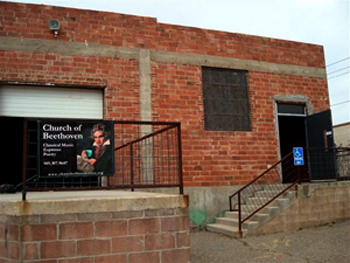Jonathan L. Friedmann, Ph.D.
Many secular people are averse to the term “spirituality.” To them, it connotes something hopelessly religious, patently unscientific and irrationally romantic. These objections are not unfounded. The popularization of spirituality in the twentieth century owed to theologians like Rudolf Otto, religious enthusiasts like William James, and New Age groups like the Theosophical Society. We have inherited the term from pious sources, associate it with mystics and proselytizers, and encounter it in devotional discourse. As a result, the very idea of “secular spirituality” might seem a careless cooption of a faith-filled concept or, worse, a laughable oxymoron.
But a growing number of secularists are adopting “spirituality” as a useful designation. They discard the supernaturalism of an immortal soul, divine entity or astral plane, but recognize opportunities for transcendence in human qualities such as compassion, love, harmony and contentment. These ideals exist prior to and independent of religious doctrine. Without relying on otherworldly interpretations or deistic explanations, secular spirituality seeks inner tranquility, pursues higher virtues and cultivates awareness of something greater than our physical selves.
While this process takes place in the realm of cognition, the overall effect is, by definition, beyond the ordinary experiences of mind and matter. It is thus better to describe it by way of example than to rely upon the limited resources of language.
There is a church in Albuquerque, New Mexico that boasts of offering Sunday services “minus religion.” It is called the Church of Beethoven, a congregation dedicated to presenting “professional live music performances of the highest quality, together with other artistic expressions from fields including poetry . . . in a manner that transcends the commonplace.” The church gathers each week for a one-hour program, typically comprised of a short musical selection, a poetry reading, a two-minute “celebration of silence,” and a substantial work of chamber music. According to its founder, Felix Wurman (1958-2009), the gathering places music “as the principal element, rather than as an afterthought.”
It is no coincidence that music plays a key role in many of the world’s religions. Melodic expression, it is widely believed, helps prepare us for transcendence. Yet music designed for sacred purposes is generally used in support of words (“worship music” usually refers to song-settings of poetry and prayer). Such music is programmatic, guided by textual narratives and meant to convey specific extra-musical themes. In contrast, most of the music performed at the Church of Beethoven is absolute, or music for its own sake. For example, a past service consisted of Bach’s Sonata in E-minor, Höller’s SCAN for Solo Flute, and Mozart’s Quartet for Flute, Violin, Viola and Cello. The intent behind this music is not religious per se. However, as the church insists, these performances can foster the ecstasy and communal bonding one would expect from a religious service—just without the dogma.
Music has the potential to bring us to a higher place. This can occur within or outside expressly ecclesiastical contexts, and may be achieved with music made for many purposes. The Church of Beethoven embraces this realization. It offers an alternative to conventional worship services, which are cluttered with rules of doctrine and practice. Its gatherings are, in a way, “pure” activities, unhindered by agenda or ideology. The same applies when we find spiritual uplift in a child’s joy, the sight of nature and other this-worldly pleasures. Spirituality belongs to us all.
Visit Jonathan’s website to keep up on his latest endeavors, browse his book and article archives, and listen to sample compositions.

